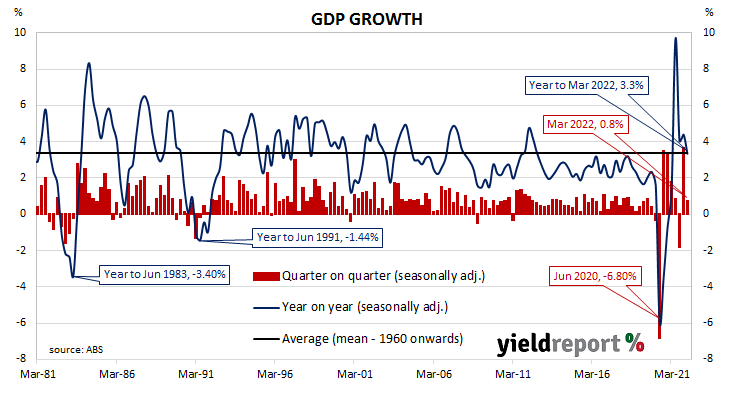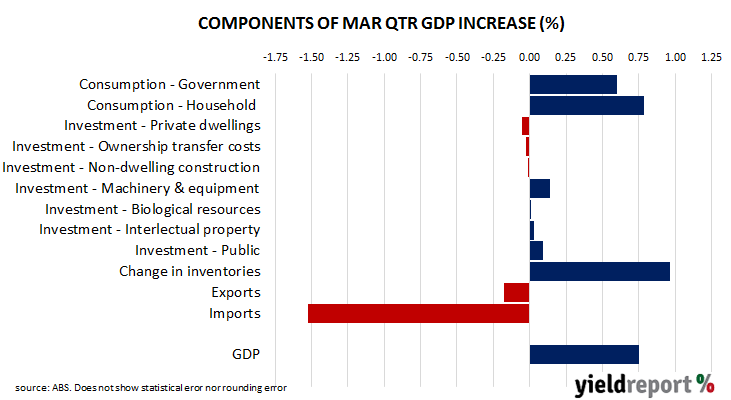Summary: Australia’s GDP up 0.8% in March quarter, in line with expectations; ongoing strength in household consumption despite Omicron, floods; supply chain disruptions remain evident; higher consumption, inventory build-up, imports major influences on result; economy expected “to shift into a higher gear” in June, September quarters.
Since the “recession we had to have” as the recession of 1990/91 became known, Australia’s GDP growth has been consistently positive, with only the odd negative quarter here and there. However, Australia’s first recession in nearly thirty years was inevitable in 2020 once governments introduced restrictions which shut businesses and limited people’s movements for an extended period of time. Positive growth rates resumed in the September 2020 quarter until restrictions were reintroduced in eastern states in the September 2021 quarter.
The latest figures released by the ABS indicate GDP rose by 0.8% over the March quarter. The increase was in line with market expectations but significantly smaller than the December quarter’s 3.6%. On an annual basis, GDP expanded by 3.3%, slower than the December quarter’s 4.4% after it was revised down from 4.2%.
“In terms of today’s release, the data show ongoing strength in household consumption despite the headwinds from Omicron and floods and comes after a very strong rise in Q4,” said NAB senior economist Gareth Spence.
Commonwealth Government bond yields rose on the day, somewhat in line with movements of long-term yields in US Treasury bond markets. By the close of business, the 3-year ACGB yield had gained 5bps to 2.98% while 10-year and 20-year yields finished 6bps higher at 3.43% and 3.75% respectively.
In the cash futures market, expectations of a steeper path for the actual cash rate over time firmed slightly. At the end of the day, contract prices implied the cash rate, currently at 0.31%, would rise to 0.585% in June and then rise to 1.37% by August. May 2023 contracts implied a cash rate of 3.435%, 313bps above the current cash rate.
While Spence noted solid consumption growth, the investment components of GDP were still being hampered by ongoing production problems. “The impact that supply chain disruptions may have on growth this year also remains evident, with both dwelling and business investment constrained by the price and availability of materials.”
Household consumption spending increased by $4.1 billion and government consumption increased by $3.2 billion, contributing 0.8 percentage points and 0.6 percentage points respectively to the quarter’s rise. A $5.0 billion rise in inventories contributed around 1.0 percentage points. Imports were $8.0 billion higher than in the previous quarter, subtracting 1.5 percentage points.
Economists such as Westpac’s chief economist Bill Evans expect improvements in coming quarters. “Growth in the Australian economy is expected to shift into a higher gear particularly over the next two quarters,” he said. “Businesses will be encouraged by a buoyant consumer as the economy continues to reopen without the disruptions of the March quarter.



